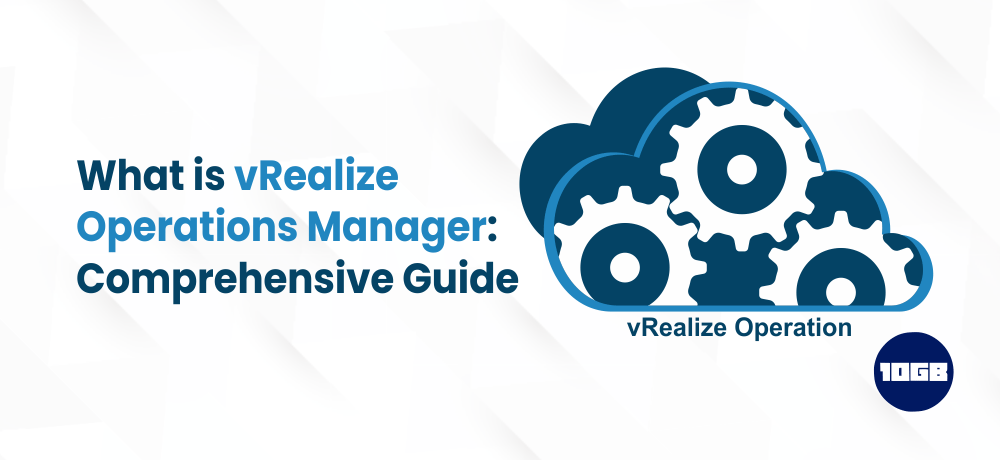With the advancement of technology, both cloud and on-premise IT infrastructure has become modern and more complex than before. The adoption of modern and complex systems can be challenging for companies as it demands a lot of time and money.
Complex systems demand a lot of time on real-time IT performance monitoring, regular upgrading of old hardware with a new one, streamlining unused storage and resources, maintaining its security, and resolving any issues.
So, most companies leverage the VMware vRealize Operations Manager (vROps) solution to overcome these challenges. VMware vROps is one of the best cloud management tools that helps in automating IT operations management, managing its performance, and obtaining insights across the physical and virtual infrastructure.
The VMware vRealize Operations Manager is so flexible that it can be installed on both the on-premise as well as the cloud. Moreover, it works with private cloud and also the hybrid cloud environments.
So far, vROps is the best cloud management tool that helps automate and ease your operations management and leverage predictive analytics.
vROps is an ideal solution for several IT environments that are looking to minimize investments in IT infrastructure via smart optimization.
Particularly, this solution is beneficial for the companies that utilize VMware vSphere or VMware vSAN.
What is vROps VMware?
vRealize operations or vROps is VMware’s tool that helps IT admins monitor, troubleshoot, and manage the virtualized environment.
Usually, vROps are delivered as a standalone service or already included with the vRealize Suite. But, vRealize operations can also be subscribed with vRealize Cloud universal.
VMware vRealize Operations manager gathers data from every object within the virtualized environment and then stores and examines it to identify and fix any issues.
The best thing about a vROps is that it can easily identify issues within the infrastructure and that too before the IT team could identify them.
Basically, vROps provide three main features; cloud monitoring, federated views, and a native console.
Holistic Cloud Monitoring: This feature can easily distinguish between a public cloud and a private cloud and leverage the AI analytics for all data within the infrastructure
Federated Views: It enables partitioning of the data on the basis of geographic locations of the data centers and vROps instances.
The native console of vROps is built while keeping in mind the features of vSphere, VMware Cloud, and vSAN and integrated instrumentation.
Suggested For Further Reading:
The Architecture of vRealize Operations Manager
vROps architecture is designed to trace several data sources simultaneously and forecast the pattern of every data object in its parameters.
Usually, some types of vROps Manager nodes are deployed to make sure that there is high availability and scalability:
Let’s see what those vROps Manager nodes are:
Master Node is a primary node that handles all the other nodes to gather data and analyze it accordingly.
Replica Node makes sure that the master node is highly available.
Additional Data Node allows scaling out vRealize Operations Manager in bigger deployments.
A Remote Collector Node is a node that collects objects for the inventory and forwards the gathered data to the data nodes. However, these nodes just do the job of transferring data and don’t store any data or perform analysis.
Each of these vRealize Operations Manager nodes will contain the following elements:
Admin/ Product UI server that offers an interface for both server and user.
A controller that manages the data flow
REST API/ Collector gathers data from all the other components in the data center.
Persistence performs the read and writes operations on the database.
FSDB stores all the collected metrics in the raw format and can be accessed across all the nodes.
Analytics manages all the calculations, and execute capacity planning function and correlations among multiple data sets.
xDB stores the data from a Historical Inventory Service which can only be accessed by the master and master replica nodes.
Global xDB stores the customization made in the vRealize Operations Manager i.e: user preferences, alarms, alerts, etc. The data can only be accessed by master and master replica nodes.
vRealize Operations VMware Badges
The badges in the VMware vROps are one way to test the objects and display the issues if any in the system.
With Health Badge, one can determine the overall status of your environment. It is the most crucial badge hence, IT administrators should act quickly as possible.
Risk Badge helps in identifying the problem which can be troublesome in the future and may degrade your system performance.
Efficiency Badge doesn’t give you insights into the current performance or warn about future performance issues. However, it offers a few tips that you can follow to run the system more efficiently.
Moreover, you can look for our Dedicated Server UK plans which are crafted for the optimal performance of your website.
